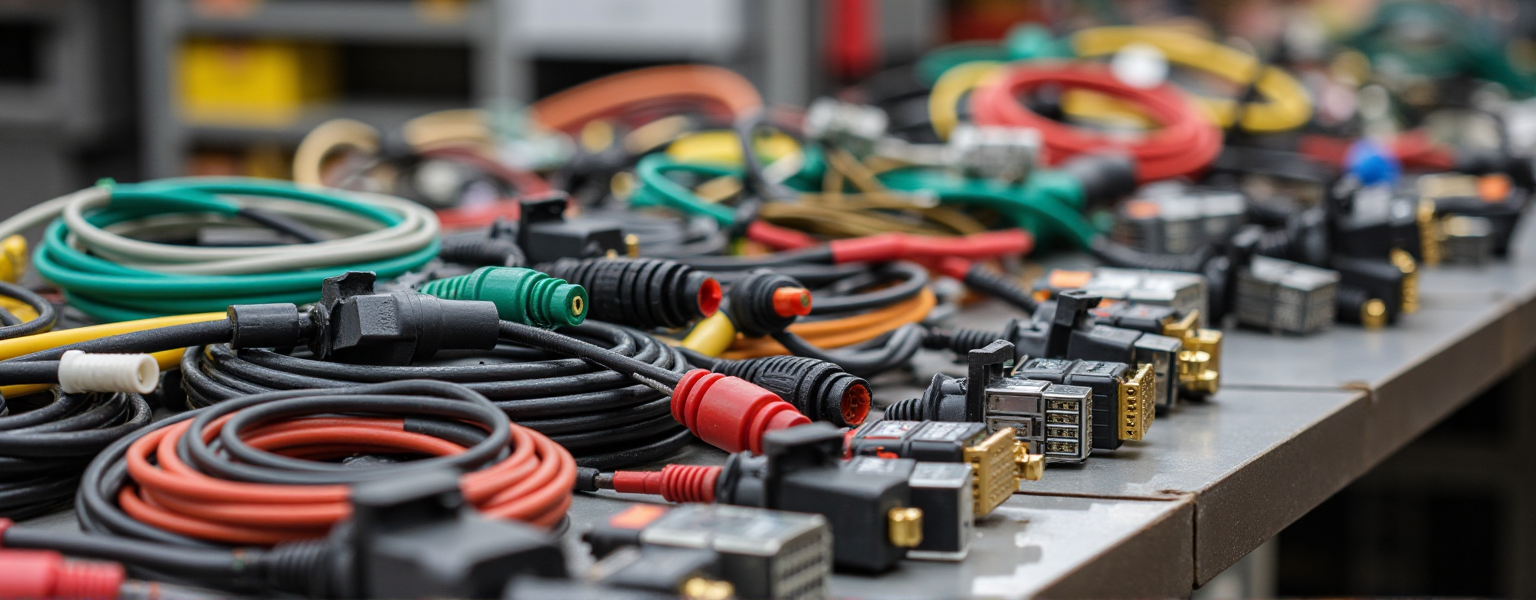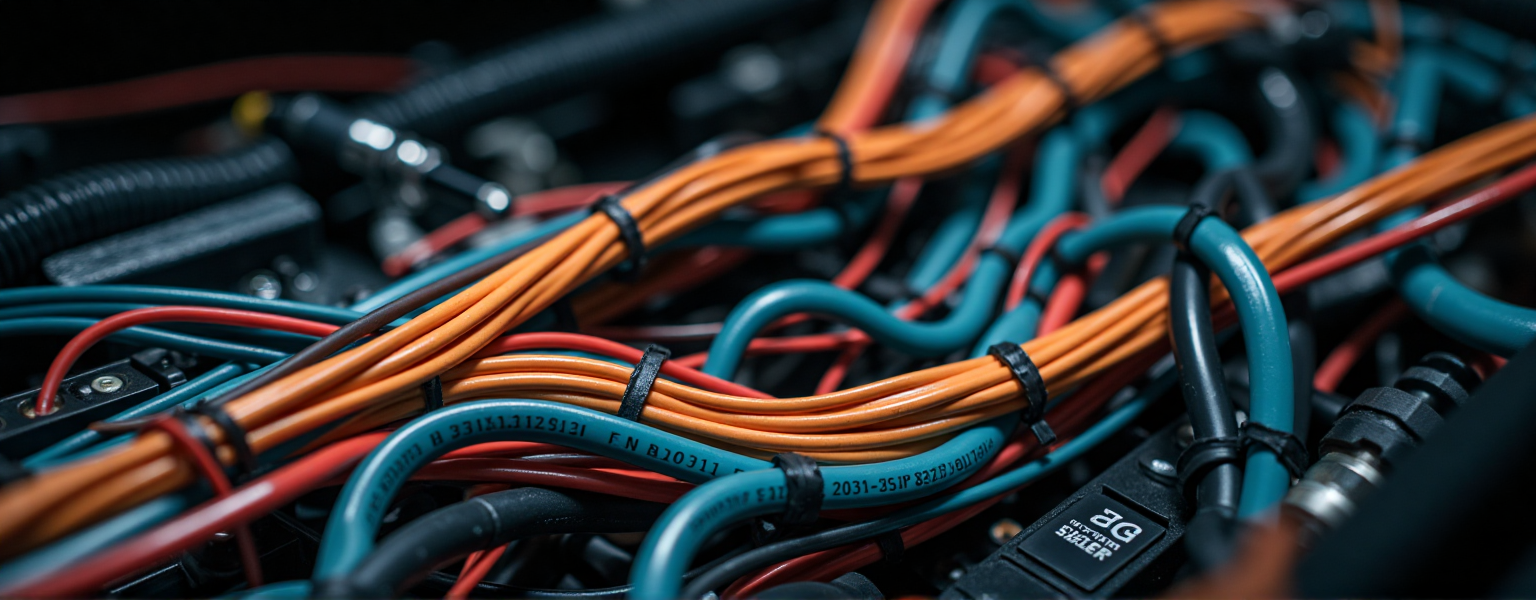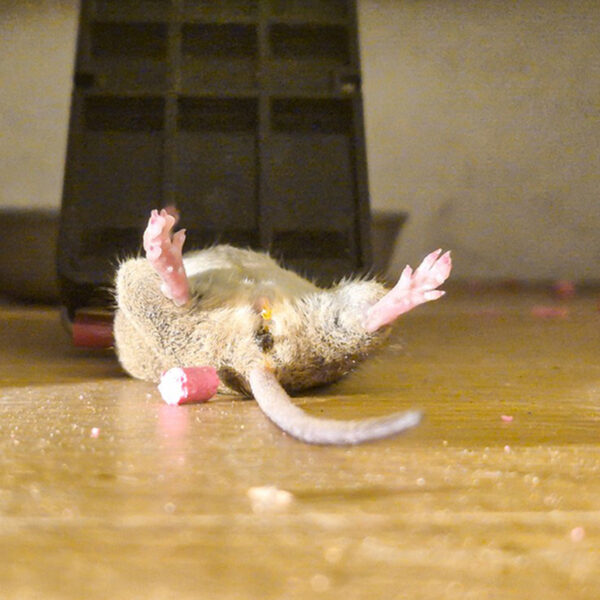Biochemical Protective Coatings for Rodent-Resistant Cables
Anti-rodent biting cable “biochemical protective coatings” mainly refer to the use of chemical substances (repellents or toxicants) or bioactive substances (such as natural extracts) to prevent or kill rodents (mainly rats and mice) that gnaw on cables. The core of these protective coatings lies in the bioactive ingredients that affect rats.

Table of contents
I. Main Classification
Biochemical protective coatings are mainly divided into two categories:
Repellent Coatings:
- Core Principle: These coatings contain chemical substances or natural extracts that are highly irritating or unpleasant to rats. When rats come into contact with or attempt to gnaw on the coated cables, they experience discomfort (such as a burning sensation, spicy taste, or nausea), which deters them from continuing to chew.
- Objective: To prevent gnawing behavior from occurring.
- Characteristics: They are relatively environmentally friendly and safer (with less impact on non-target organisms and the environment) than toxic coatings. However, their effectiveness may diminish over time or due to environmental factors (e.g., rain, UV exposure). Additionally, different rat species or individuals may vary in their sensitivity.
Toxicant Coatings:
- Core Principle: These coatings contain slow-release rodenticides (such as anticoagulants). When rats gnaw on the coated cables, they ingest the toxic substances, which ultimately lead to their death.
- Objective: To reduce the rodent population by eliminating individual gnawers, thereby indirectly protecting the cables.
- Characteristics: The effects are direct and relatively long-lasting (depending on the drug release technology). However, there are significant risks and ethical concerns, such as poisoning of non-target animals (e.g., pets, wildlife), environmental pollution (e.g., leaching of rodenticides), development of rodent resistance, and the issue of disposing of dead rats. These coatings are subject to stricter regulatory controls.

II. Detailed Classification and Subcategories
(a) Repellent Coatings
Natural Plant Extract Repellent Coatings :
- Common Ingredients: Capsaicin (from chili peppers), gingerol (from ginger), cinnamaldehyde (from cinnamon), allicin (from garlic), quassin (from bitter wood), and neem extract (from neem).
- Mechanism of Action: These substances produce a strong spicy, bitter taste, or irritating odor that acts on the oral mucosa and trigeminal nerve of rats, causing a burning sensation, pain, and discomfort, which deters them from continuing to chew.
- Advantages: They are derived from natural sources and are generally considered more environmentally friendly and low-toxicity (compared to synthetic chemicals) and have higher public acceptance.
- Disadvantages: Their persistence is poor as they can be easily washed away by rain, decomposed by UV light, or oxidized. The effectiveness varies widely among different rat species and individuals. High concentrations may affect the cable’s other performance properties (e.g., insulation) or pose difficulties during application. They can also be expensive.
- Application Form: These extracts are commonly added to polymer matrices (such as PVC, PE, polyurethane) to make cable sheaths or applied as surface spray or dip coatings.
Synthetic Chemical Repellent Coatings :
- Common Ingredients: Cyclanilide (actinidine), trinitrobenzamide, tetramethylthiuram disulfide (thiram), denatonium (bitrex).
- Mechanism of Action: These chemicals produce an extremely bitter taste (e.g., denatonium) or irritation to the oral cavity and nervous system (e.g., cyclanilide), causing a strong aversion reaction in rats.
- Advantages: They are usually more potent and stable, providing more reliable protection. Some are more resistant to environmental factors.
- Disadvantages: Some of these chemicals may be toxic or environmentally harmful. Long-term exposure can pose health risks to workers. There is also the possibility of rats becoming “habituated” or developing tolerance. Regulatory scrutiny is typically more rigorous.
- Application Form: They are mainly added to cable sheath materials or applied as high-concentration coatings on the outer sheath surface.
Taste Aversion Coatings :
- Principle: These coatings have an extremely bitter taste that causes rats to stop chewing immediately due to the unbearable flavor, usually in combination with the above-mentioned natural or synthetic bittering agents.
- Objective: To deter rats from chewing in the moment of their first bite.
- Challenge: Ensuring the taste is strong and long-lasting, and effectively delivered into the rat’s mouth.
(b) Toxicant Coatings
Slow-Release Anticoagulant Rodenticide Coatings :
- Common Ingredients: Second-generation anticoagulants like brodifacoum, bromadiolone, delivered in the form of microcapsules or embedded in the coating with special carriers.
- Mechanism of Action: When rats chew on the coated cable, they ingest the rodenticide. The anticoagulant disrupts the vitamin K cycle, causing internal bleeding that leads to death over several days.
- Advantages: The effectiveness is precise and can directly reduce the rat population. The slow-release technology prolongs the coating’s effectiveness.
- Disadvantages:
- Significant Safety Risks: Highly toxic to non-target animals (e.g., pets, birds, wildlife) and even children. There is a risk of secondary poisoning (e.g., animals predating on poisoned rats may also die).
- Environmental Risks: The rodenticide may leach from the coating, contaminating soil and water.
- Ethical and Regulatory Issues: Usage is strictly regulated in many countries and regions. It is often banned or restricted in environments where non-target animals may come into contact (e.g., outdoors, near residential areas). Disposing of dead rats is difficult and unhygienic.
- Development of Resistance: Long-term use may lead to resistant rat populations.
- Application Limitations: Generally restricted to strictly controlled environments where non-target animals have little chance of contact (e.g., specific industrial settings or underground). Clear warning signs are required
Neurotoxic or Fast-Acting Toxicant Coatings :
- Principle: The use of faster-acting neurotoxins or other toxic agents (e.g., cholecalciferol, zinc phosphide, though rarely used).
- Disadvantages: In addition to all the disadvantages of anticoagulant coatings, fast-acting toxicants are usually more toxic and pose higher risks. They may also make rats more wary (leading to refusal to chew), making them even rarer in practical cable coating applications.

III. Common Characteristics and Challenges of Biochemical Protective Coatings
Effectiveness :
- The effectiveness is influenced by a variety of factors: the concentration of active ingredients, release rate, coating uniformity, environmental conditions (temperature, humidity, UV exposure, rain), rat species, hunger levels, and population pressure.
- Repellent Coatings: Focus on prevention, but some “bold” or extremely hungry rats may still attempt to chew.
- Toxicant Coatings: While they can eliminate individuals, it takes time, and the chewing behavior has already occurred, potentially causing initial damage to the cable. They also cannot prevent other rats from continuing to chew.
Durability/Lifespan :
- This is one of the biggest challenges for biochemical coatings. Active ingredients can volatilize, decompose, be washed away, or leach out over time, reducing their effectiveness until they fail. Regular maintenance or cable replacement is necessary.
- Slow-release and weather-resistant formulations are key areas of research and development.
Safety :
- Repellent Coatings: Relatively safer, but potential impacts on people, the environment, and non-target organisms (e.g., allergies, irritation) still need to be assessed.
- Toxicant Coatings: Safety is the main bottleneck, with high risks and strict regulatory controls.
Environmental Impact :
- The active ingredients and their degradation products may pollute soil and aquatic ecosystems. Selecting biodegradable and low-ecotoxicity components is crucial.
Impact on Cable Performance :
- The coating material itself and the mixture with active ingredients must meet the basic requirements of cable performance, such as electrical insulation, mechanical properties (flexibility, wear resistance), flammability resistance, and weather resistance. The addition of active ingredients may sometimes degrade these properties.
Cost :
- Coatings containing special active ingredients (especially those that are highly effective, long-lasting, and environmentally friendly) are usually more expensive than standard sheaths or mechanical protection layers.
Regulations and Standards :
- The use of toxicant coatings is strictly regulated by pesticide control, environmental protection, and occupational health and safety laws in various countries.
- Compliance with relevant cable product standards (such as IEC, UL, GB) and their requirements for rodent resistance testing (usually validated through simulated chewing tests) is necessary.

IV. Application and Selection Recommendations
- Repellent Coatings: These are currently the more widely used and accepted biochemical protection methods, especially in environments with high environmental and safety requirements (such as indoors, data centers, near residential areas, food industry). When selecting, focus on the weather resistance, longevity, and eco-certifications of the active ingredients.
- Toxicant Coatings: Application is extremely limited and controversial. They may only be considered in strictly controlled environments with low risk of non-target animal contact (such as dedicated cable trenches, underground). Strict management and warning measures are required. Not recommended as a mainstream rodent prevention solution.
- Comprehensive Protection: Biochemical coatings (especially repellent types) are often used in combination with physical mechanical protection (such as metal armor, glass fiber/aramid fiber braiding, rigid sheathing) to form a multi-layered protection system, enhancing overall reliability and durability.
- Assess Requirements: Before selecting a biochemical protective coating, carefully evaluate the rodent risk level, application environment, regulatory requirements, budget, and expectations for longevity and safety.
Summary
Biochemical protective coatings for rodent-resistant cables primarily rely on chemical or bioactive substances (repellents or toxicants) to function. Repellent coatings (based on natural extracts like capsaicin or synthetic bittering agents/stimulants) are currently the mainstream due to their relatively safety and environmental friendliness. However, they face challenges in terms of durability.
Toxicant coatings (containing slow-release rodenticides) are direct in effect but come with high safety, environmental, and ethical risks, with their use strictly limited and not recommended. Regardless of the type, the effectiveness of these coatings diminishes over time. It is essential to balance protective efficacy, cable performance, cost, and environmental impact.
In practical applications, biochemical coatings (especially repellent types) often serve as an effective supplement to physical mechanical protection, collectively forming a more comprehensive cable rodent protection system. When selecting, safety, environmental impact, and regulatory compliance should be prioritized.





Leave a Comment